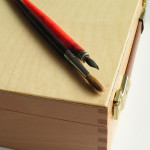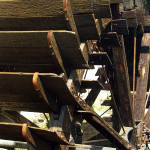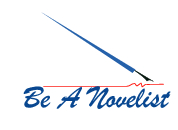Nothing is Random
In my previous blog post, Creating Patterns as a Novelist Part I, we took an inside look at how the novelist looks at, recognizes, and uses patterns in the course of plotting. In that post I said:
 It’s easy to mistakenly believe that plots come together randomly in willy-nilly fashion. Creative urges may come in willy-nilly fashion, but plot structure and strategy should never be.
It’s easy to mistakenly believe that plots come together randomly in willy-nilly fashion. Creative urges may come in willy-nilly fashion, but plot structure and strategy should never be.
I also stated that fiction hates chance. Nothing in a plot is random, no more than a brush stroke in a painting is random. Each stroke is skillfully applied. The same with planning the words and sentences and chapters of your novel.
How Much is Too Much?
But that statement begs the question, “How much planning is too much planning?” And then, “Can there be too little planning?”
Through my decades of working side-by-side with scores of beginning novelists, the oft-repeated assumption that I have seen is when it comes to the subject of creativity. When taking those first baby steps in the plotting process, it’s tempting to assume that the creativity will simply flow – unbidden and unabated.
What a rude awakening at the first slam into the moment when the novice novelist sits down at the computer and there is no flow of creativity. What happens then?
“I knew it. I knew I wasn’t really cut out for this novel writing gig. I should have listened to my mother (or brother-in-law, or great-aunt Tillie).”
Will that describe you? Have such thoughts tormented you in the past? This isn’t a time to quit, it’s a time to buckle down and learn about the patterns of the creative flow.
 Creativity and Water
Creativity and Water
Let’s make a comparison of creativity with water. Both are fluid. Both are formless. Both will conform to the container in which it is held.
What happens when there is nothing to contain the water? It runs off and flows out wherever it pleases. However, if the water is channeled correctly it has the potential to turn a grist mill, or run large turbines that generate electricity.
Likewise, the novelist needs a vessel, or container for the creativity so that it may be restrained, constrained, guided, and – to a point – controlled. What might such a vessel look like? It could look like planning/plotting the novel.
Wasting Energy
The beginning novelist who starts writing with little or no preconception of the story usually ends up expending a great deal of excess creative energy trying to figure out exactly what the story is, who the characters are, and how the plot should unfold. In other words, this novelist has no vessel to shape the free-flowing creativity. It’s splattering out all over the place.
 We’ve probably all heard the argument that a blank mind is the one that allows a work to emerge from your mind in its purest form. Sorry to burst your bubble, but that’s simply not true.
We’ve probably all heard the argument that a blank mind is the one that allows a work to emerge from your mind in its purest form. Sorry to burst your bubble, but that’s simply not true.
Yes, your unconscious mind is an amazing part of you; and in fact is capable of amazing feats. However, it cannot create something from nothing. Something has to be there for you to build upon. A framework – or, in this case, a pattern.
More on this subject of how to balance out the novel planning, plotting, and patterns in my next post! Stay tuned!
Photo Credits: © Andreea Stefan | Dreamstime Stock Photos
© Roman Milert | Dreamstime Stock Photos

Coming Soon
The first two titles in the Norma Jean Lutz Classic Collection will be available in print form.
Flower in the Hills and Tiger Beetle at Kendallwood will soon be in bound copies.
Watch for upcoming announcements.


![]()

